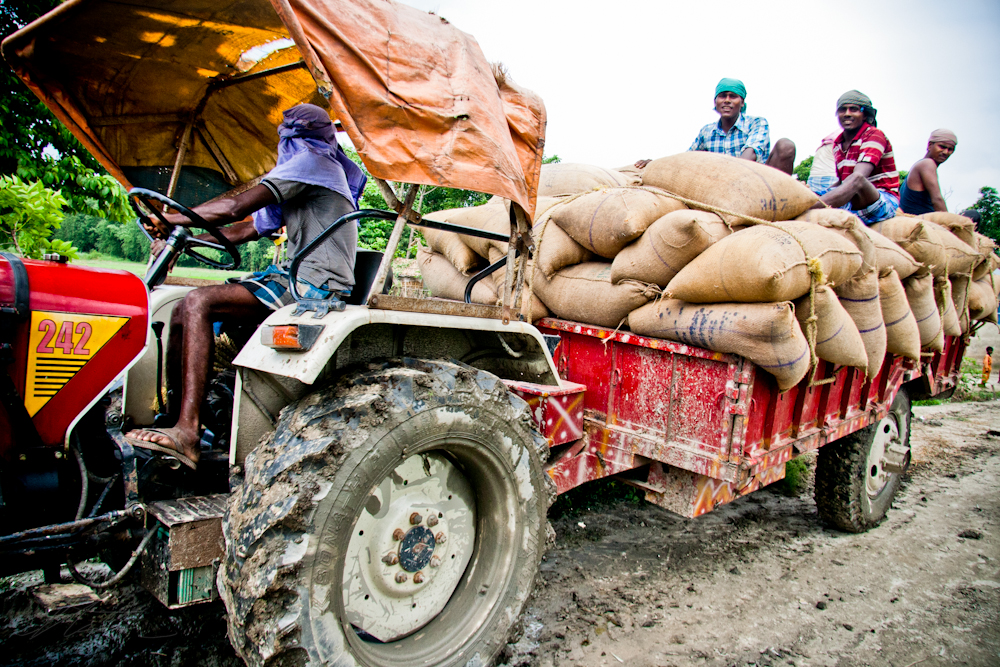
Natural Light Portraits: Lana in the Forest
"Keep close to Nature's heart... and break clear away, once in awhile, and climb a mountain or spend a week in the woods. Wash your spirit clean."
- John Muir
I went back to my roots last weekend with a very simple shoot with a new collaborator, Lana.
I love shooting in natural light, and I am very pleased with the way these photos came out, with a variety of styles and moods. Lana did a great job of capturing the raw expressiveness I had hoped to capture with this project.
Travel Blog: Those Roads...
India, Day 9
 India has some unique roads. They even did a series of IRT Deadliest Roads in India. Because the roads in India are crazy dangerous. It's not just due to an east-versus-west difference in driving styles, it's also because the roads themselves run the gamut from muddy sloughs snaking between village huts to crumbling shelfs niched into the sides of snowy mountains. In the low country, the roads are peppered with cattle. In the mountains, you have to look out for suicidal goats running headfirst down the mountainside.
India has some unique roads. They even did a series of IRT Deadliest Roads in India. Because the roads in India are crazy dangerous. It's not just due to an east-versus-west difference in driving styles, it's also because the roads themselves run the gamut from muddy sloughs snaking between village huts to crumbling shelfs niched into the sides of snowy mountains. In the low country, the roads are peppered with cattle. In the mountains, you have to look out for suicidal goats running headfirst down the mountainside.
There will be some more stories toward the end of my recap that show off the seriously dangerous mountain roads of northwest India--those roads in particular were memorable enough to warrant their own documentary at some point--but for now, enjoy a few selections from the "Monsoon Mud Collection."
Thinking about the creative process...
 I've spent the bulk of this solar rotation working on my manuscript. I've never finished a novel-length piece before, and I am determined to have this one finished before the end of the year. It's placing demands on my creativity like I have never had before, and I'm enjoying the challenge. Like all would-be writers, my dream is to see the book published and on store shelves, but I'm trying to avoid thinking that far ahead right now. For the time being, I am contenting myself with letting the journey be journey is the destination. In the meantime, the subjects of creativity and the creative process are on my mind as I take a short break from Pages.
I've spent the bulk of this solar rotation working on my manuscript. I've never finished a novel-length piece before, and I am determined to have this one finished before the end of the year. It's placing demands on my creativity like I have never had before, and I'm enjoying the challenge. Like all would-be writers, my dream is to see the book published and on store shelves, but I'm trying to avoid thinking that far ahead right now. For the time being, I am contenting myself with letting the journey be journey is the destination. In the meantime, the subjects of creativity and the creative process are on my mind as I take a short break from Pages.
Creativity, whether with words or the visual arts, is an interesting and fickle entity. The best analogy I can think of from my own experience is that creativity is like an ember. It's always smoldering, but you have to give it a little kindling and stoke it into something hot and lively. My own stoking / creative process has become increasingly interesting as I have grow more disciplined and organized as a wrier. Sometimes I write well when I write in a library or crowded coffee house, wearing my earbuds but not playing any music through them; it makes me feel strangely comfortable and insulated when I do that. Other times I write better in an empty room with music up nice and loud. And, as always, there is always a tumbler of hot, strong coffee close at hand.
Today has been a music day, and as the story I'm working on right now is set in 1960's Mississippi, replete with dusty roads and vanishing point cotton fields, there is only one option:
What is your creative process? By what means do you stoke the ember of ideas into a roaring blaze of creativity?
Hatuey, Texans, Kites, and other Memories from Guantanamo Bay
 I had the opportunity to be part of something very special this summer. Through the Department of Public History at the University of West Florida (holla, alma mater!) I was part of a team of volunteer historians who interviewed various naval veterans who did tours of duty at Naval Station Guantanamo Bay in Cuba. These interviews were recorded and archived in their entirety for purposes of further research, as well as for incorporation into an upcoming nationwide exhibit.
Growing up, I always enjoyed listening to older people tell stories from their lives. Ironically, I know more about many people outside of my family than I do about my own grandparents' histories. While many of my peers were bored by the storytelling of various "old ruins," I enjoyed hearing tales of days gone by. Most recently, I have made it one of my personal goals to spend more time listening and documenting what my elders have to say.
I had the opportunity to be part of something very special this summer. Through the Department of Public History at the University of West Florida (holla, alma mater!) I was part of a team of volunteer historians who interviewed various naval veterans who did tours of duty at Naval Station Guantanamo Bay in Cuba. These interviews were recorded and archived in their entirety for purposes of further research, as well as for incorporation into an upcoming nationwide exhibit.
Growing up, I always enjoyed listening to older people tell stories from their lives. Ironically, I know more about many people outside of my family than I do about my own grandparents' histories. While many of my peers were bored by the storytelling of various "old ruins," I enjoyed hearing tales of days gone by. Most recently, I have made it one of my personal goals to spend more time listening and documenting what my elders have to say.
History is much more than the headlines and the chapter titles. When someone says "Guantanamo," a million images might spring to an audience's mind. Castro, Soviet missiles, post-9/11 detainees; these things are common knowledge. But what are the people like? What do they do between the headlines, between shifts? Those "core elements" are what this project seeks. We want to understand the communities and their relationships. In the brilliant conversations which I had recently, I heard stories of everyday life in GTMO that spanned from as far back as 1939 to as recently as 2003. I met interesting men and women whom I never would have connected with otherwise, and I am incredibly grateful to have had these opportunities.
Here are some excerpts:


























